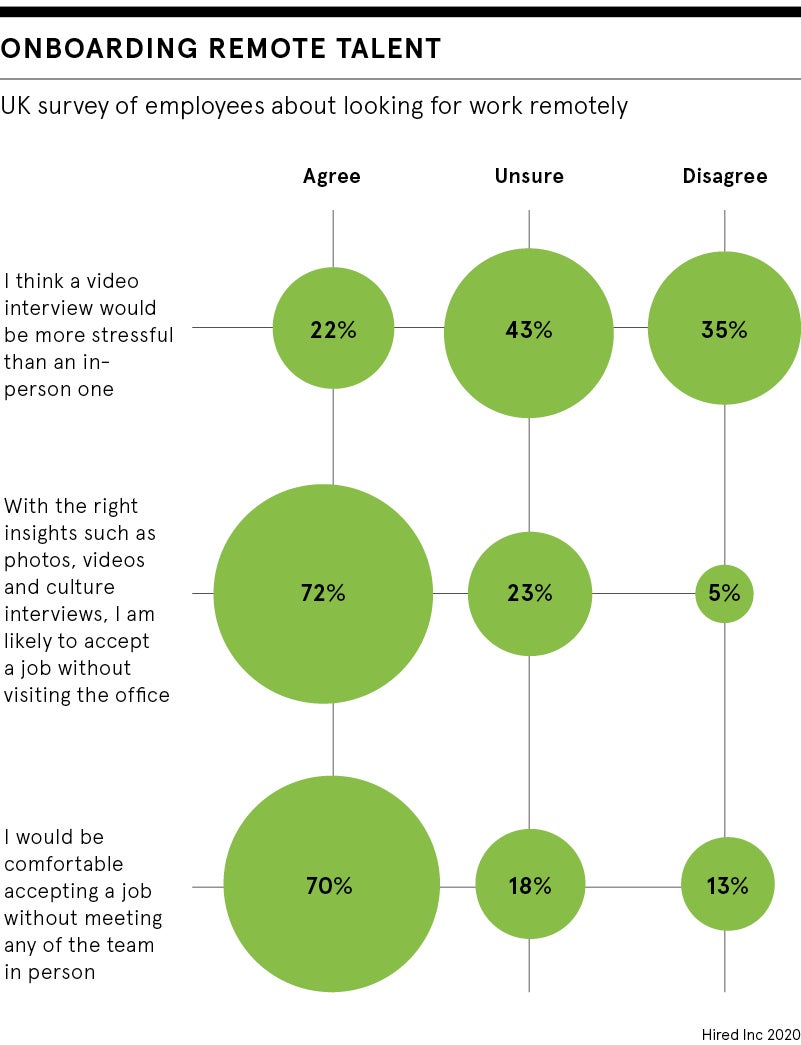The coronavirus pandemic has presented challenges that have forced leaders to think long term and act quickly in every part of their organisation.
Talent management is no exception, with bold action needed to provide long-term growth. In early-June, almost nine million workers were furloughed in the UK alone. While the country grapples with an entirely new way of working life, this unexpected influx of talent in the remote workforce could provide a needed boost to talent management strategy.
Human resources for remote talent
For the companies that are hiring, Godelieve van Dooren, partner at Mercer, says it’s no time to cut back on talent. “With the uncertainty surrounding the COVID-19 crisis, some organisations may be taking stringent measures to manage their current costs, however they cannot be short-sighted in their approach,” she says.

“They must consider the resources needed to ensure the organisation can rebound to growth post-crisis.”
For businesses that have long been seeking a change in talent management, the rise of the remote workforce could offer a more globalised, diverse talent pool.
To achieve this, it’s vital human resources use the data at hand to understand their talent supply. This involves taking a close look at the skills, capabilities and experience within the workforce. From there, organisations can devise a talent management strategy based on the skills needed to take them through the crisis and look at ways of opening up the hiring process to get the very best.
Sourcing top talent outside of megacities
Despite high living costs and expensive commutes, the promise of a wider range of job opportunities and higher earnings has meant a disproportionate amount of resources has remained concentrated in city centres. This has created extraordinary wealth for some and stark, entrenched inequalities for many more.
Unequal distribution between cities and rural areas has created a postcode lottery for access to skills, training and employment. The 2019 Social Mobility Index found moving regions could shift social mobility, but that people from affluent backgrounds are 70 per cent more likely to move regions than those from working-class beginnings and three times more likely to move to London.
Meanwhile, just 31 per cent of people living in North-East England felt there were good opportunities to make progress in their careers, compared with 74 per cent in the South East and 78 per cent of Londoners. There’s a clear moral and strategic need for talent management and HR professionals to address the regional skills gap.
We have a unique opportunity to rethink and redesign the way we work. Not just work methods, but talent management in general
But as the COVID-19 outbreak sees thousands leave the world’s capitals and set up office at home, could we see a shift away from mega cities? Darren Murph, head of remote at GitLab, says remote working provides an opportunity to level the playing field and operate a new strategy in talent management.
“Remote work has opened up a global talent pool for us and new opportunities for dedicated people who may not be in a position to move to advance their career,” he says. “We believe remote work can reverse rural depopulation, make communities less transitory and spread opportunity to underserved areas.”
The company has recently publicised their experiences as a way to support other organisations looking to expand their talent pool through remote working. They’ve highlighted that implementing a company handbook, taking a stripped down, accessible approach towards remote working software and technology, as well as strong leadership, are all key to rolling out mass remote working during a crisis.
Removing long commutes for employees can also dramatically improve work-life balance and overall mental health, and management can benefit from the increased productivity as a result.
Learning and development among the remote workforce
The rise in remote working has also created new opportunities for learning and development, which acts as a pillar in talent management for attracting and retaining employees beyond the pandemic.
While some companies are cutting back on learning and development, others are using this moment to increase their investment in training. Earl’s Restaurant chain, a family-owned premium casual dining chain of 68 restaurants in the United States and Canada, is investing in virtual learning not just for Earl’s leadership team, but for all of its 6,500-strong workforce.
There’s also a window of opportunity to provide a more cohesive learning and development strategy for employees globally. Four thousand employees at BBVA bank in Spain and Argentina have access to a “campus wallet”, an open platform providing courses and training. The company also recently held a virtual hackathon, which was accessed by one thousand of its employees across seven different global locations.
“We now have a unique opportunity to rethink and redesign the way we work. Not just work methods, but talent management in general: how we attract and retain talent, and how we can conceive talent in the most decentralised way, not pinned on certain physical locations,” says Ricardo Forcano, global head of engineering and organisation at BBVA.
Rapid digitalisation, skills shortages and retaining a global workforce were all issues surrounding talent management long before the crisis. In a few short months, organisations have no longer been able to afford the time to ponder what this might mean for the future of work. While there’s no clear way out of the crisis, implementing a talent management strategy that keeps the wellbeing of workers at its core is a good place to start.
Human resources for remote talent

Sourcing top talent outside of megacities
We have a unique opportunity to rethink and redesign the way we work. Not just work methods, but talent management in general
